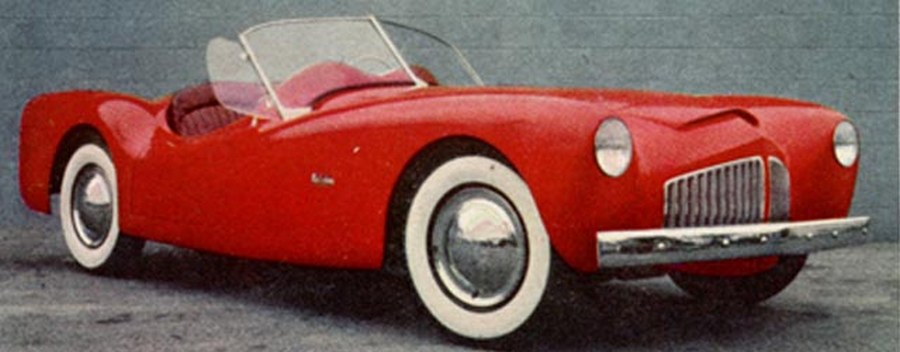
Hi Gang…
Ask lots of questions – and come up with more whenever possible.
When I was growing up, I must have driven my parents crazy. Learning as much as possible is my passion, and I’ve continued doing this in all areas of life – including researching the history of fiberglass sports cars in the 50s.
“Leave no fiberglass matt unturned,” you’ve heard me say time and time again.
And ask lots of questions.
In some of the areas we’ve researched, we have plenty of folks still with us who are enthusiastically participating and helping us write the history that they lived so many years ago. With other research, there are family members and friends / associates who can help and lend a hand with what they remember from faraway fiberglass dusty days. And in still other areas, we have to assemble the pieces from what we learn. Sometimes it’s like running around a room and collecting water vapor in a jar – in order to quench your thirst.
But still you have to ask questions – sometimes new questions that pique your curiosity. Such as the “how” and “why” concerning B. R. “Woody” Woodill’s choice of Willys as the basis of his sports car in ’52.
In researching this history, we’re now working with the Woodill family and in the near future we’ll have a nice review of their family’s automotive legacy at least thru the 50s. That will be an honor to share with everyone here at Forgotten Fiberglass. And as part of the story of the Woodill Wildfire, we need to examine the relationship between Willys and Woodill a bit more closely.
So let’s start this process and look at Willys, and why Woodill may have chosen this company as the perfect manufacturer to partner with in the production of a new American sports car.
Willys Overland Motors Makes Cars – Twice!
Recently, good friend Alden Jewell and I put together a history on the Willys Overland Motors in the immediate prewar era. We did so as part of an analysis of why the Willys car was the basis of many early specials including the first two production Glasspar G2 sports cars built – the Brooks Boxer and the Alembic I.
Click here to review “The Prewar Willys – The Basis For America’s First Postwar Sports Car”
As you review the prewar history of Willys, you’ll quickly learn that they were doing well producing cars from the ‘30s thru ’42. Then they hit paydirt – they started producing the Willys Jeep in 1941 for the military and their company grew by leaps and bounds.
When World War II ended in 1945, they began producing the civilian version of the Jeep which continued thru 1965. However, they did not start producing cars again immediately after war’s end. “Why bother?” I’m sure they thought to themselves. The “truck” side of their business was going gangbusters.
In 1946 Willys started producing the Willys Jeep Wagon and in 1948 they expanded to producing the Willys Jeepster – designed by Brooks Stevens. Their production continued to emphasize truck types of vehicles, but by 1951 they decided to expand and return to the production of cars.
In ‘52 they introduced the “Aero Willys” line of cars. These included the Aero Wing (introduced January 18, 1952), Aero Ace (introduced March 5, 1952), the economy minded Aero Lark (introduced March 21, 1952), and the Aero Eagle which was introduced in late ’52.
And B.R. Woody Woodill was already a Willys Overland dealer.
Woody Woodill Thinks “Willys!”
Now remember, when Willys introduced their line of Aero cars for ‘52, fiberglass sports cars had been introduced mere months earlier in November ‘51 at the Petersen Motorama. No doubt Woody Woodill took notice, and within a year, he put together a plan to create a sports car for the emerging automobile line of Willys. He wanted to be part of the newest automobile entry by a company in America – Willys Overland Motors – and his “Willys Wildfire” ultimately debuted at the November ’52 Petersen Motorama in Los Angeles, California.
What more could a Willys Overland dealer hope for?
The production of a Willys sports car makes perfect sense. Think about what Woody must have seen in Willys. They were a successful automobile / truck manufacturing company who had re-emerged in ’52 into the automobile market. Sports cars were the rage across America, and “fiberglass” was the new wonder material that would be used in all such “future cars.”
Woody Woodill wanted to bring all of these factors together and be at the center of a new production fiberglass bodied sports car for the new automobile manufacturer – Willys Overland Motors. And America already had a history using Willys based frames and drivetrains on early postwar custom and sports cars – it seemed like the perfect match.
So why did Woody use Shorty Post frames (maker of Glasspar G2 frames in late ’52 and early ‘53) instead of Willys Aero frames as the basis of the Willys Wildfires (Series 1) built in late ’52? The answer…
“There was no such thing as a Willys automobile frame.”
Utilizing Willys Parts For A Willys Sports Car
That’s right! The Willys line of Aero automobiles in ’52 was nicely advanced for its era and used unibody construction. They called this approach the “Willys Aero-Frame Construction.”
So I’m sure that put forth an interesting dilemma to Woody and his plans. If you’re going to call a car by its manufacturer’s name, you need to use their parts. And the “Willys Sports Car” should use the Willys frame – right? That would be a way for the Manufacturer – and the public – to identify the name “Willys” with the “Woodill Wildfire.”
So what Willys parts did Woody use in his ’52 sports car? A review of four sources of information yield the answer. These sources include:
- The Woodill Wildfire brochure distributed at the Petersen Motorama in ’52
- A Motor Trend article in December ’52
- An article in the February ’53 issue of Road & Track
- A San Antonio Light Newspaper article printed on December 18, 1952
Taken together, these four sources reveal that the Willys Wildfire used the following Willys parts:
- Willys steering wheel and steering column
- The Hurricane 6 90 horsepower Willys engine
- Willys Aero taillights
- Transverse leaf springs with independent front suspension of a Willys Jeepster / Station Wagon are utilized as well as a Willys rear axle (Road & Track, February ’53)
- Engine, drive shaft, steering mechanism, rear end suspension system are all Willys (Motor Trend, December, ’52)
- Overdrive was standard equipment unless customer deleted (Motor Trend, December ’52)
- Upon close inspection of same article above, the gas tank and radiator also appear to be from a ’52 Willys
- The transmission is assumed to be Willys given that the engine and rear axle were confirmed as Willys. However, the floor shifting mechanism is of question since Willys trucks and cars used column shifting equipment– at least the 2 wheel drive Willys vehicles. Conversion kits were available at the time so converting a side-shifting transmission that used a column shifter to a floor shifting one was fairly easy (having done this with friends working on our Gougeon streamliner – I can confirm). But still, the transmission used for the Series I Wildfire has not been confirmed (in the process of researching as of the writing of this article).
The pages below from a handout at the November ’52 Petersen Motorama show a listing of the parts used in the first “Series 1 Woodill Wildfire:”
Here are close-up pictures of the Willys parts used as shown in the February ’53 article in Road & Track:
The only issue that still cannot be confirmed is the assertion of “nine rear-end ratios from 3.88 to 5.88” being available – as discussed in the ’52 Woodill brochure and articles too. Our best guess is that after-market kits were utilized to give the customer (in theory) nine different choices of gear ratios for their Willys rear axle.
The Willys Wildfire Sports Car Debuts – November 1952
So Woody took his show on the road and introduced the world to his Willys sports car at the November ’52 Petersen Motorama. His intentions of producing a Willys sports car was first announced by Motor Trend in December ’52 as follows:
“First showing of the Woodill Wildfire was at this year’s Motorama show in Los Angeles. As soon as production is large enough to meet local consumption, Woodill expects to market two models of the trim sports car through authorized Willys dealers throughout the U.S.”
Woodill Wildfire historian Greg Griffin found the following article that identified more about Woody’s plans in the San Antonio Light Newspaper printed on December 18, 1952. In this article about “New American Sports Cars,” the author, Siler Freeman – Auto Editor of Hearst Newspapers – revealed that Woody Woodill and his Willys Wildfire were in Toledo, Ohio pitching the idea to Willys in December ‘52.
Here’s what the newspaper article had to say:
Visiting Willys-Overland in Toledo last week for a look at the expanded 1953 line, this observer found a real production line plastic body sports car on which orders are being written. Willys is not building it but is supplying components to B. R. “Woody” Woodill, one of its dealers from Downey, California, who has set up a Lilliputian production line to assemble this car and sell it.
Woodill calls the car the “Wildfire” and it’s liable to catch on just like that. The engine, drive shaft, steering mechanism, rear end and basic frame are standard Willys components. He uses a body made by Glasspar, whose chief, Bill Tritt, was here recently with his own version of a sports car which he sold to a Michigan manufacturer.
The Woodill car weighs 2000 pounds. It is only seven inches off the ground. Woodill’s plans right now call for 10 a month (production), to sell at $3263 F.O.B. Los Angeles. One of the big features to me was plastic top, which can transform the sports roadster into a coupe in a matter of minutes. The top weighs only 27 pounds, can be lifted into place by one man and fastens to the windshield by three screws.
A hook in the back will hold it in place there. Sliding windows complete the ensemble. Woodill said he had made a survey on the coast of his market and learned, strangely enough, that 72 per cent of those interested in this type car wanted a hard top. He worked with Tritt on the design, started it on Monday and by Thursday had one ready to show. It still needed some work, he admitted, but the basis is there.
The Wildfire is being built on a 101-inch wheelbase, about seven inches shorter than the standard Willys. It has the F-head engine which develops 90 horsepower, and is only 37 inches high. Woodill makes his own frames on his tiny assembly line.
Woodill, a big Californian, is a sports car enthusiast. He was a Dodge dealers for 12 years, sold out and then returned a year later as Willys dealer. Now he has the manufacturing bug. And the Wildfire is his outlet. He says frankly: “I don’t expect to make a million out of it. But I think I have something really worthwhile.”
By February ’53, Time Magazine confirms the Willys Sports Car concept with the following piece in print:
One month later Willys Overland denies such a deal took place with a retraction printed in Time Magazine as follows:
So what happened?
Kaiser Frazer Purchases Willys Overland Motors:
Two things happened.
First, Kaiser Frazer was in the midst of purchasing Willys Overland in early to mid ’53 – probably earlier. And second, Kaiser Frazer had their own plans for a sports car – built out of fiberglass, no less.
At the same time that Woody debuted his Willys Wildfire at the Petersen Motorama in November ‘52, Howard “Dutch” Darrin debuted his “Darrin Competition Sports Car” at the same show, and Darrin put forth his car as the new sports car for Kaiser Frazer. Two new potential American sports cars debuted at the same show – the Petersen Motorama – at the same time. The Kaiser Darrin sports car and the Willys Wildfire. Both were in the “proposal” stage – the Wildfire more so than the Darrin.
The first official announcement of Kaiser’s new sports car appeared on October 6th, 1952 in Time Magazine and discussed Glasspar building the bodies for Kaiser Frazer. Here’s what they had to say:
“Kaiser-Frazer, which is jacking up horsepower in its Kaiser line, plans to make 1,000 sport cars with plastic bodies, made by California’s Glasspar Company (TIME, Feb. 18). K-F’s new model will weigh about 2,000 pounds, cost about $2,000 (as compared to) $1,450 for the 2,300 lb. Henry J.”
So unbeknownst to Woody Woodill, by the time his Willys Wildfire debuted in November ’52 at the Petersen Motorama, its fate was nearly sealed due to the impending sale of Willys to Kaiser Frazer and Kaiser’s own plans to build their Darrin designed fiberglass bodied sports car.
It’s interesting to juxtapose Woody’s trip to Toledo in December, 1952 against Kaiser’s confirmation that a Kaiser sports car would be forthcoming. Any of you who have been part and parcel to big business mergers know that the operation of separate companies continue in spite of knowledge of the upcoming merger. Nothing is ever certain so it makes sense that Willys would move forward with the idea of a Willys sports car – up until the time that a Kaiser – Willys merger was certain. Willys might have been interested – but as soon as the merger took place, the need for a Willys fiberglass sports car disappeared.
The Willys Wildfire Becomes The Woodill Wildfire – July 1953
Undaunted, in early ’53 Woody went back to the drawing board to push forward his idea of a new American sports car – one that you could build yourself. He worked with Bill Tritt who created a fresh new design for a sports car built on Woody’s ideas of what it should be like (Bill told me he didn’t like the Detroit style rear fins of the Wildfire, but that’s what Woody wanted – the customer is always right.)
Concerning the frame, he had new ideas too. Woody had watched Glasspar change from using Shorty Post frames in late ’52 and early ’53 to using newly designed frames from Ted Mangels and Ed Martindale of Mameco. According to Frank Hecox, Glasspar employee who participated in the build of most of the Glasspar G2 sports car bodies, Bill Tritt designed the frame in collaboration with the folks at Mameco. The first Mameco frame was used on Glasspar’s own race car and from March ’53 on, Mameco frames were the frames of choice for Glasspar customers building their own sports cars.
Woody saw this and so did Short Post who built Glasspar’s original frames used on the first approximate 30 Glasspar G2’s. So Woody retained Shorty Post to build a frame that would be specific to his Woodill Wildfire. Again, according to an article about the Wildfire that appeared in the August ’53 issue of Motor Trend, Bill Tritt designed this frame as well. This new frame – the Woodill Wildfire frame based on the Mameco design – would debut with what we now know as the fully original body design of the Woodill Wildfire.
The first Woodill Wildfire (Series II) appeared in this form on the cover of Motor World on July 17th, 1953, and was available as a finished car with Willys or Ford drivetrain (Motor Trend, August 1953). It was also available in two different kits for home construction. Woody added one more part to the Woodill Wildfire body from a Willys Aero – the front grille bar. Remember…he was a Willys dealer after all
And don’t forget…by the Fall of ’53 Woody’s Wildfire had already been chosen as the lead car(s) in the Tony Curtis and Piper Laurie movie, “Johnny Dark,” and more movie appearances would occur as well.
What Happened To Willys?
This was an exciting time for Willys but one that would be short-lived. By early ‘53 Willys was in the process of being purchased by Kaiser Frazer. Willys continued to produce cars after the merger, and the last year that Willys cars were manufactured was 1955. In ‘55 the body shell remained the same, but the cars produced were substantially re-trimmed. In addition, the model names had been changed to the Willys “Custom” and “Bermuda” models – the “Aero” name had disappeared.
So Willys postwar foray into American automobiles lasted from ’52 thru ’55 with a total production run of about 90,000 cars.
Production of Willys automobiles for the America market ceased in ’55, but that didn’t stop Willys. Production started again in ’60 and the name “Aero” was revived for the South American market – specifically Brazil. And rather than the short 4 year run of automobiles they had in postwar America, Willys produced cars in Brazil for over 10 years.
For those of you wanting to learn more about the postwar years of Willys and their automobiles, please visit the “Willys Aero” website run by Rick Kamen. It’s a wonderful website that just might make you into a postwar Willys enthusiast as I am in the process of becoming myself 
Here’s the website:
Summary:
I hope this journey down the circuitous path of the history of the Willys Wildfire was a worthwhile one. And if you have made it this far in this story – I have a surprise. Did you know that Willys did make a production fiberglass sports car in the ‘60s in Brazil? And one of the fanatics of fiberglass in our group has recently acquired one – a very exciting story!
More about that car in a future story here at Forgotten Fiberglass.
Hope you enjoyed the story, and until next time…
Glass on gang…
Geoff
——————————————————————-
Click on the Images Below to View Larger Pictures
——————————————————————-




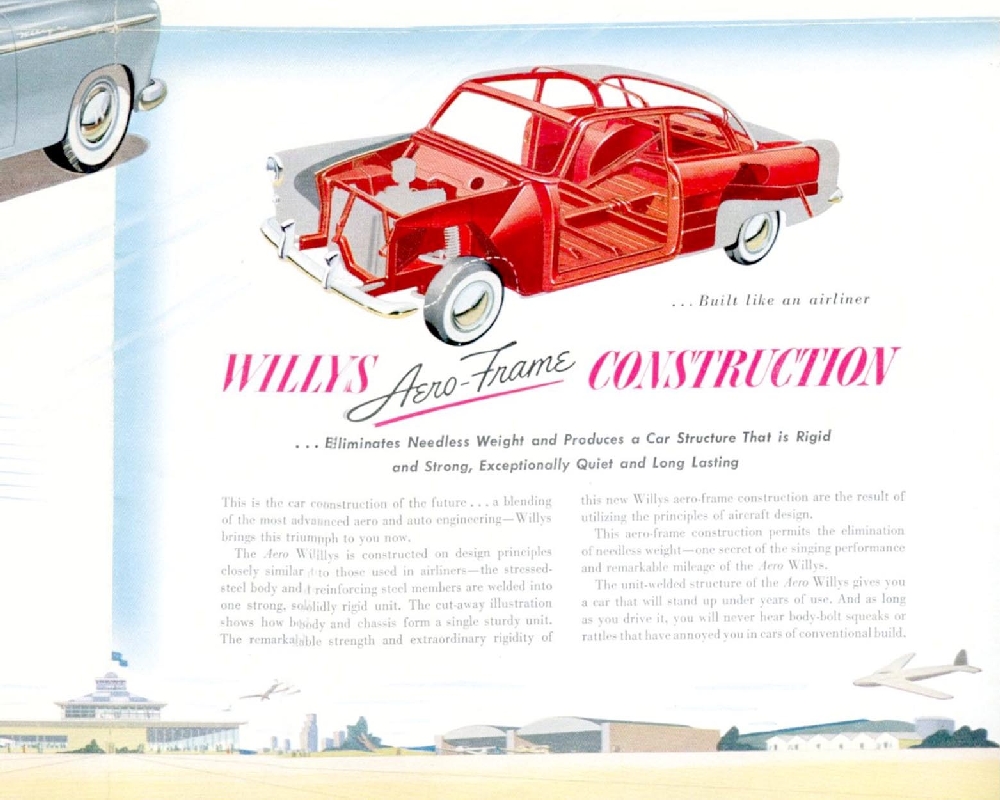
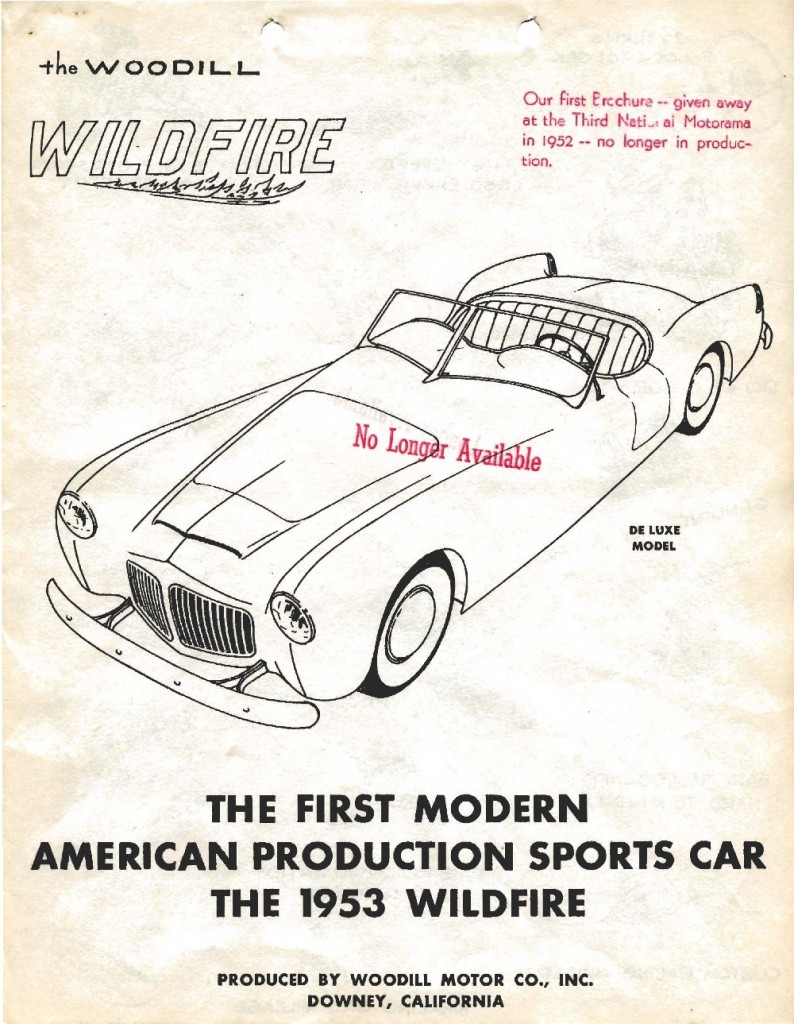
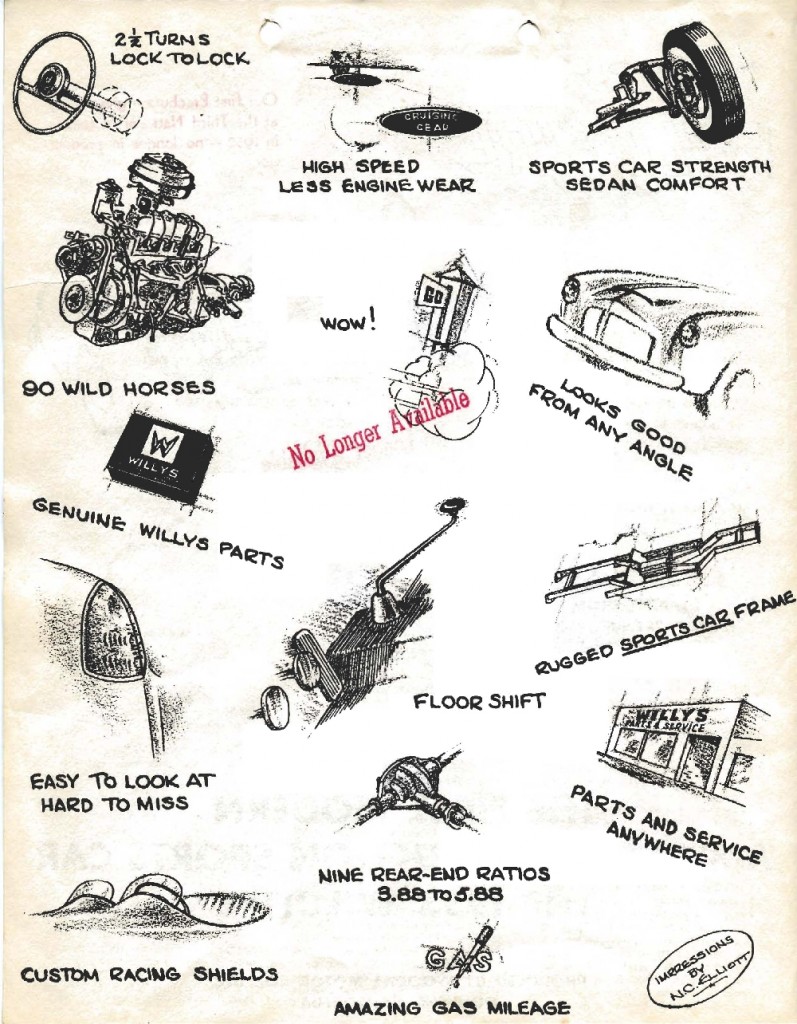



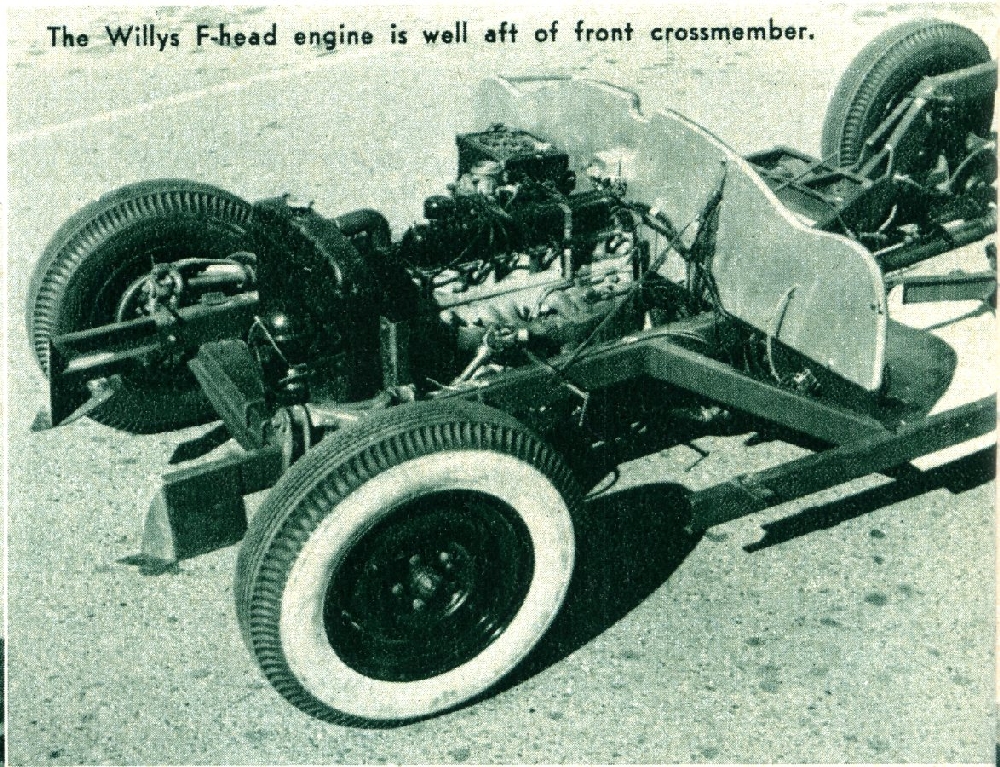
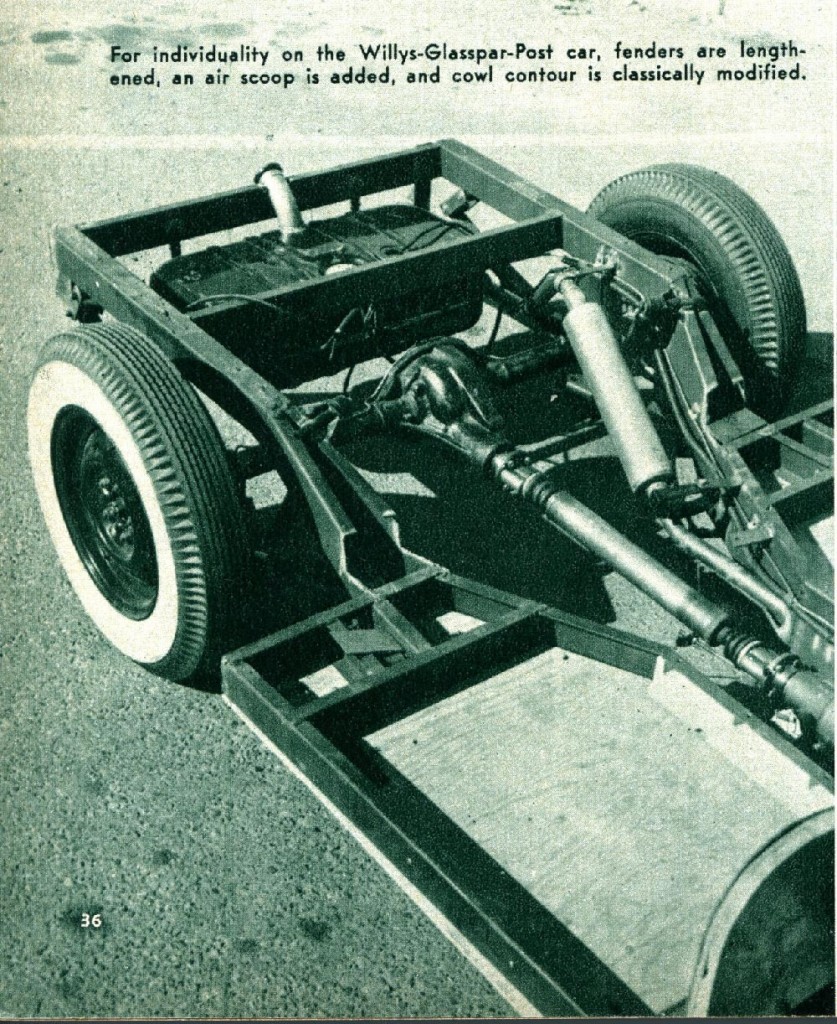
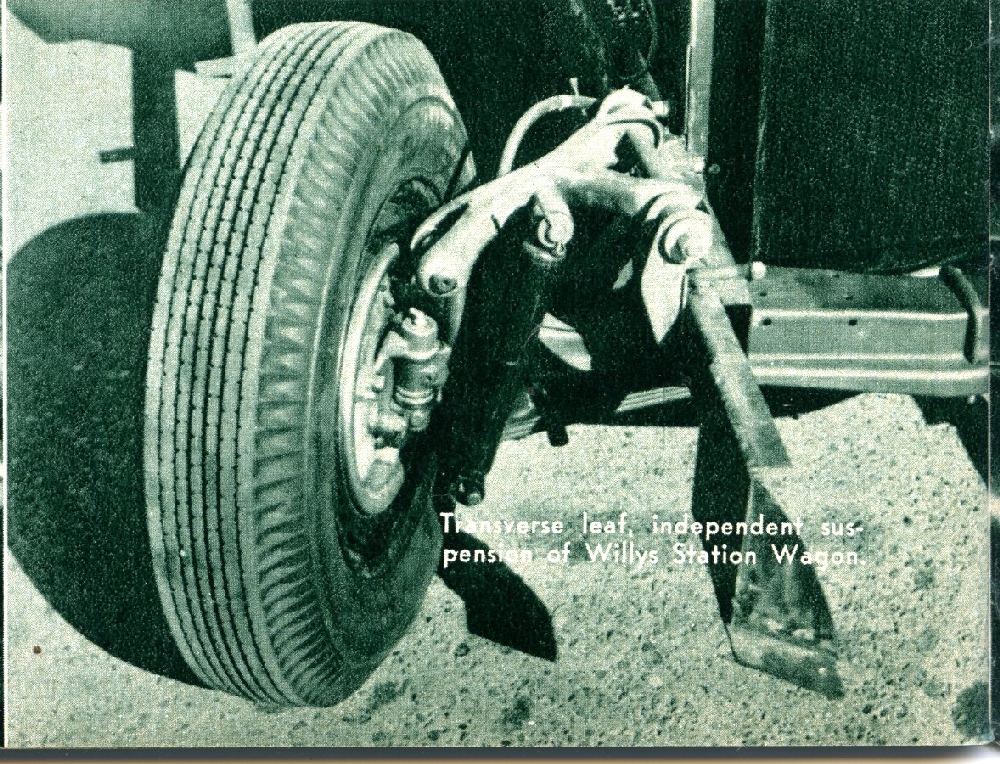

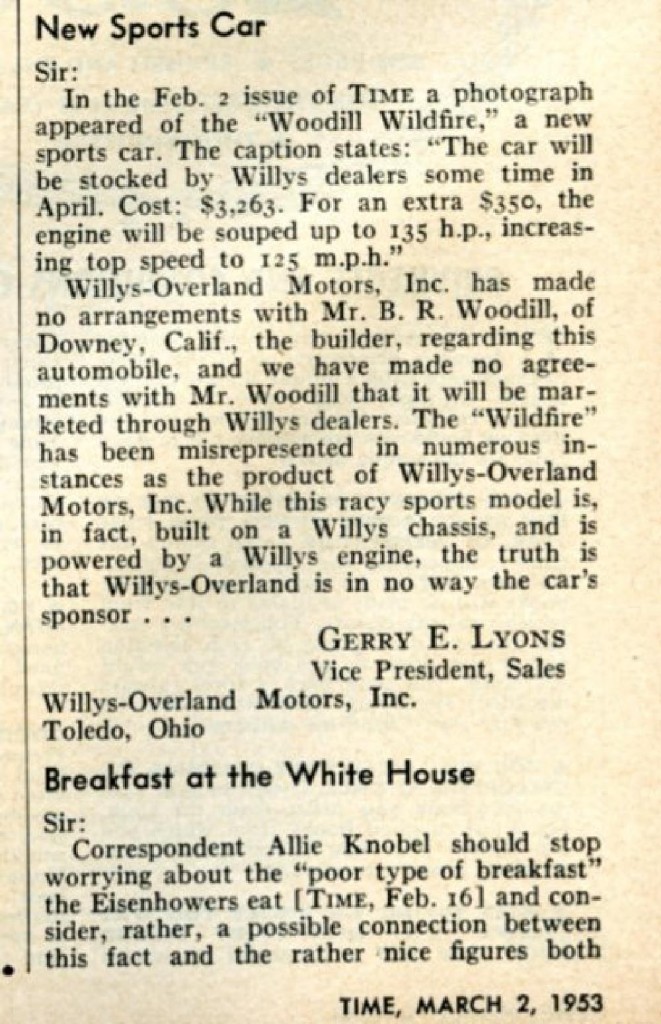


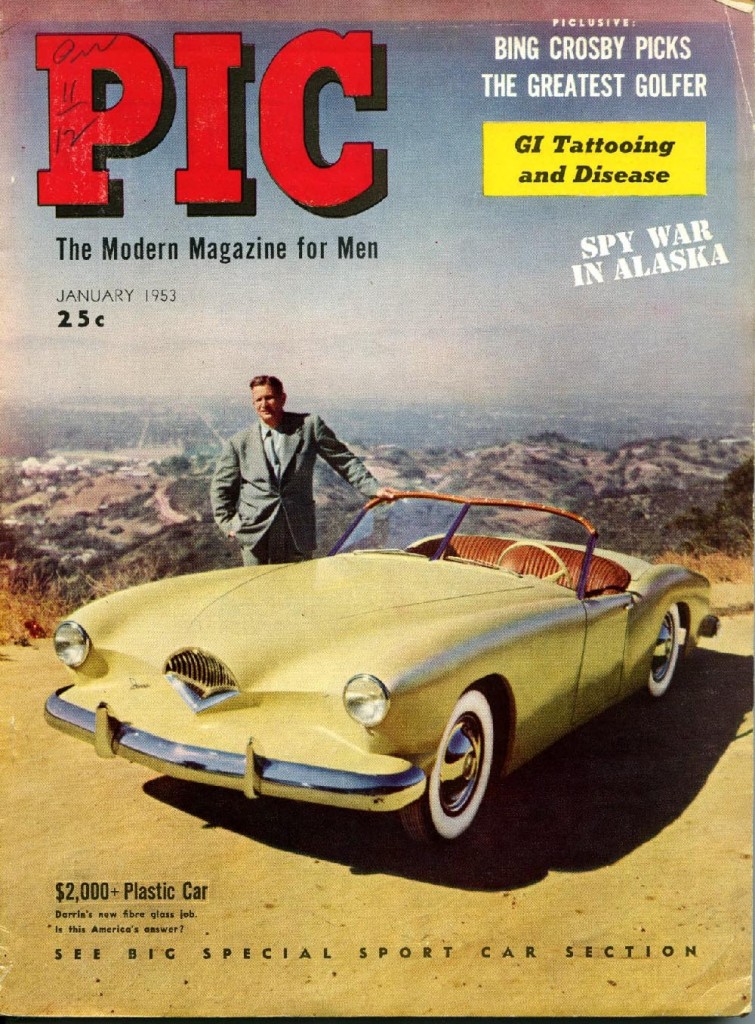
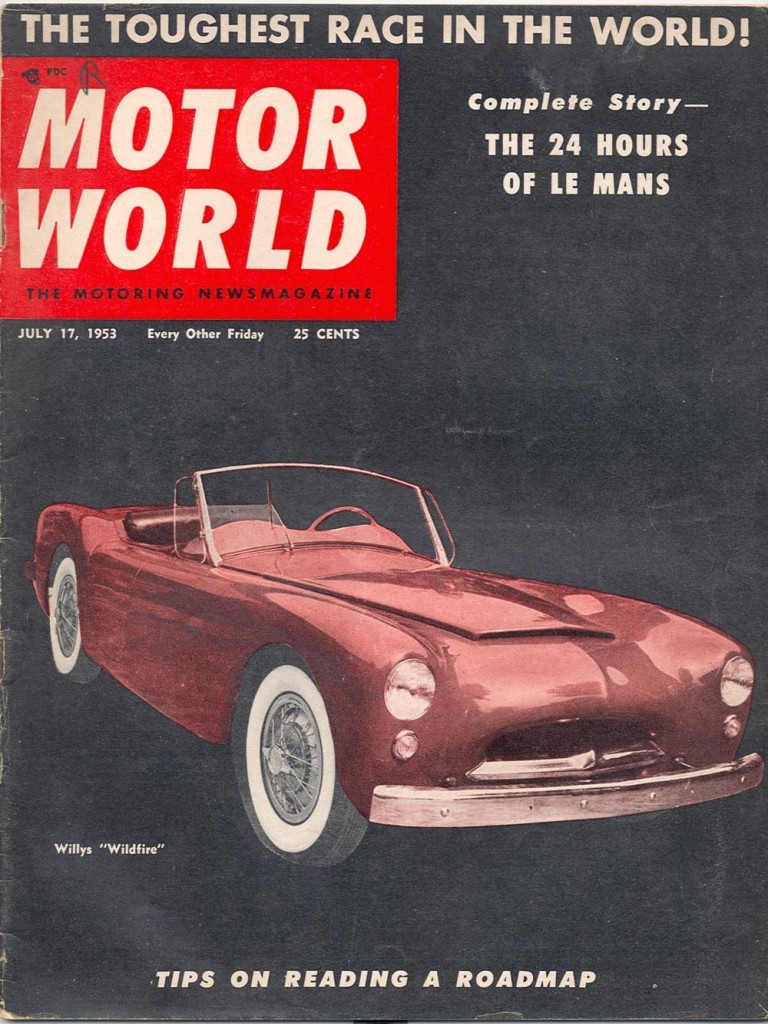

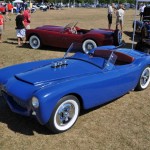
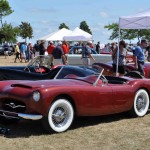
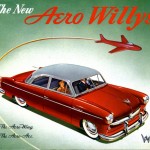
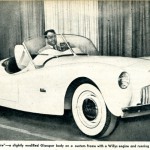
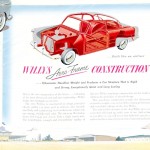
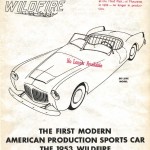
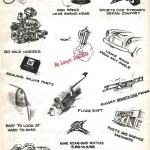
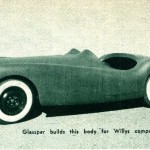
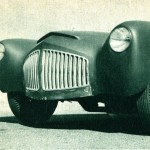
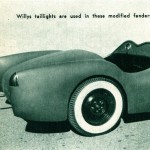
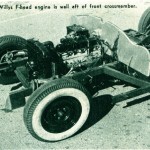
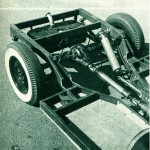
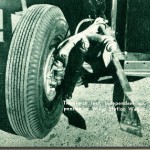
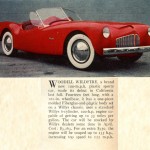
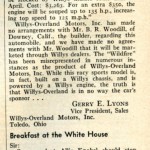
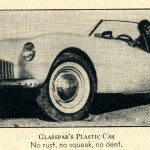
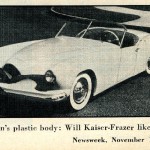
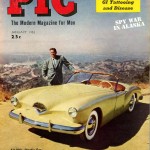
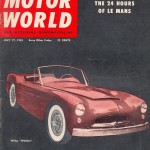
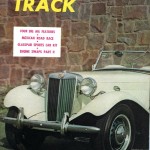
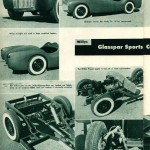
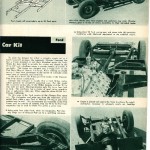
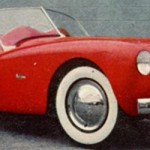
I owned a 1948 willys wildfire. I have a photo of it arriving at the Broome County airport, in Binghamton,n.y. It was delivered in 1949, by cargo plane, from California. It was built on a ??model A ford frame?? with a jeep 4 cylinder engine?? It was registered as a 1948 in the state of N.Y. I don’t know the maker but only a few were made. Needless to say it was a 1948 fiberglass body Willy’s Wildfire…I can look up and send you the photo if you like????
Keith
Hi Keith…
Great to hear from you and “yes” – I’d like to see a photo.
It turns out that the car you owned may have been one of the prototypes. Can I call you this weekend and learn a bit more?
Thanks for your time and have a great day
Sincerely,
Geoff Hacker
Forgotten Fiberglass
(813) 888-8882
Hi Keith…
Great to hear from you and “yes” – I’d like to see a photo.
It turns out that the car you owned may have been one of the prototypes. Can I call you this weekend and learn a bit more?
Thanks for your time and have a great day
Sincerely,
Geoff Hacker
Forgotten Fiberglass
(813) 888-8882
Wish the Darrin had been produced as designed, raising the front up 3\” spoiled the effect of the front end completely.
Great article, I’ve always enjoyed the Widfire and was on the trail of an original owner car years ago, but he wasn’t ready to sell at the time.
You do not list production figures. Are they available somewhere?
Thanks, Geoff for a concise and interesting history of another car-guy and his vison. As well written as it is, makes me think maybe you should write a book!
Rodney
The transmissions were made by Borg Warner and are the same basic family as 37 Chevrolet 3-speeds and early Studebaker champs. These early ones could be fitted with a floor-shift lever as shown in the Wildfire sales lit. As this transmission was fazes out in the 1950, Gibson, the garden tractor company in Longmont CO bought leftover production from BW. I have one of the shift lever assemblies that I had planned to use on a Studebaker OD that would bolt up to an Olds 215 3-speed bellhousing. The transmission case bolt pattern was also the same as the early post-war Jeeps.
BW supplied lots of the transmissions to cars that were of the assembled car types such as Willys and Kaiser. Hollanders Interchange books show how to mix n match this stuff. The length of the main input drive gear changed from car to car make.
Scott Carr….I’m sending you an e-mail with info on the Willys trans used in the first Willys Wildfire. Check it out and call me if you can Thanks! Geoff
Thanks! Geoff
Another great article made more so with all the great pictures.Keep em coming..
~ a great article, the details of the story are captivating.
the point is made that ‘the transmission is assumed to be Willys’ ‘however, the floor shifting mechanism is of question’. this gave me cause to look very closely at the sketch titled ‘floor shift’ from the February ’53 article in Road & Track. it appears to be exactly the shifter used in my ’52 Willys Overland wagon. that suspicion settles nothing but leads me to believe there may be an association. — sc
The floor shift lever assembly fit the basic Borg Warner transmission that Willys used post-war. I have one of the lever assemblies and it is a part any Willys dealer could have purchased from Willys Parts Division. The left-over stock of these 3-speeds went to Gibbson Tractors in Longmont CO.
~ you are correct, Hugh. the Borg-Warner T90 three speed transmission was used by various car makers even as late as 1962 in the Kaiser-Jeep. it can be configured as top-load floor shift style or column shift side lever linkage by simple interchangeable parts. the overdrive was also an off-the-shelf item, i believe known as Saturn OD, later owned by Warn, then by Advance Engineering. Geoff steered me to reference research sites & transmission information was forwarded to the Peterson Automotive Museum to be verified against their example, the George Albright series I Wildfire. he promised to let us know the result of the comparison.
i am curious, Hugh, what vehicle your Oldsmobile 215ci aluminum engine will power. i have owned several of the Buick version and it’s one of my favorite motors. compact, light, efficient. lots of aftermarket equipment available, even fuel injection as employed on the later Rover 3500cc & larger units. btw, i’m told it is important to change the coolant regularly. -scot
Ditto and kudos to Rollie Langston. WOW ! Your article, Geoff & Fellow Fiberglass Wizards, have masterfully tied together so many myriad relationships between and among the players in the Willys/Woodhill Wildfire Saga. Those of us who were involved with Harry Heim in his work in many arenas of fabrication of fiberglass products, were focusing primarily on installing fiberglass bodies on our own emerging chassis and drivetrains, with Harry’s intervation at our request.
Our gang, our generation in the 1950s, were pursuing careers and further education, while continuing our contact with Heim. In this current era, many of us get together in September at the Watkins Glen Vintage Sports Car Festival, where we re-boot our memories, particularly involving Harry’s generous hands-on tutorials in producing handsome, well performing fiberglass sports cars.
Even though Dean Bailey and his parents had a Kaiser-Frazer dealership, and Dick Leipold, architect, owned a Kaiser Darrin, the guys and I who were garduating from high school, were ten years younger than Dean and Dick, and Harry was ten years their senior. Not that we were “left out of the loop”, we heard bits and pieces about other people who were engaged in similar stuff as we were, who lived on the west coast and had sunshine all year round. We read all of the magazines, but that didn’t clarify “stuff” that our great gang of fiberglass fellows are contributing today ! It is such a treat to be getting
‘the rest of the story’ .
Kudos and accolades to Geoff and all the Forgotten Fiberglass Experts. What a fabulous history lesson. Almost all the blanks filled in and dots connected, at least until someone asks yet another question Very fine work!!
Very fine work!!
The Willys 77 brakes were 9″ mechanical of a Bendix design. They had a 4 bolt patern for the 17″ wires and with skinny tires would have looked odd on a sporty car. The juice backing plates may have come off a 1939 to 1941 era Willys car. Several cars had Bendix brakes with a common axel mounting patern, but few had 4 lugs.
Wonder if there any original photos of this car?
the original 1950s California build of the blue car pictured above utilized a Willys “77” rear end, driveshaft, brakes, and the 17″ wire wheels. Front suspension was independent Ford but was adapted to Willys at the brakes. Since running gear was flathead Ford, the Ford radiator was used. The other Willys components were from the Aero, which included the taillight assemblies and the steering wheel and column.